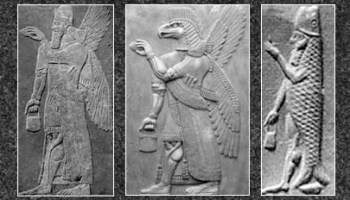We continue considering a paper written by Estonia’s University of Tartu’s Amar Annus, “On the Origin of Watchers: A Comparative Study of the Antediluvian Wisdom in Mesopotamian and Jewish Traditions,” Journal for the study of the Pseudepigrapha, Vol 19.4 (2010 AD): 277-320 (find my series here).
One of many concepts shared by ancient cultures within their most ancient myths and legends, derived from common knowledge which spread abroad after the Tower of Babel incident, is that other than human beings (gods, demons, Angels, etc.) mated with humans and produced hybrids.
Amar Annus notes that the “post-flood apkallus were ‘of human descent’, which means that apkallus could mate with humans, as the Watchers did.”
There is reference to a giant named Enkidu within the Gilgamesh epic who engages in “extended sexual intercourse with a mortal woman.”
Also, “In the Ugaritic myth The Birth of the Gracious Gods (KTU 1.23), El enters into sexual activities with two maidens, who become his wives. Two sons are born to El, the deities Dawn and Dusk.”

With reference to “demons, both malicious and beneficent” Annus notes, “Socrates once averred (Plato, Apol. 15, 27B-E) that they may be the children of gods and nymphs or other women.”
Plato was defending against the charge that he did not believe in the gods and stated:
But this is what I call the facetious riddle invented by you: the demigods or spirits are gods, and you say first that I do not believe in gods, and then again that I do believe in gods; that is, if I believe in demigods. For if the demigods are the illegitimate sons of gods, whether by the nymphs or by any other mothers, of whom they are said to be the sons—what human being will ever believe that there are no gods if they are the sons of gods?
